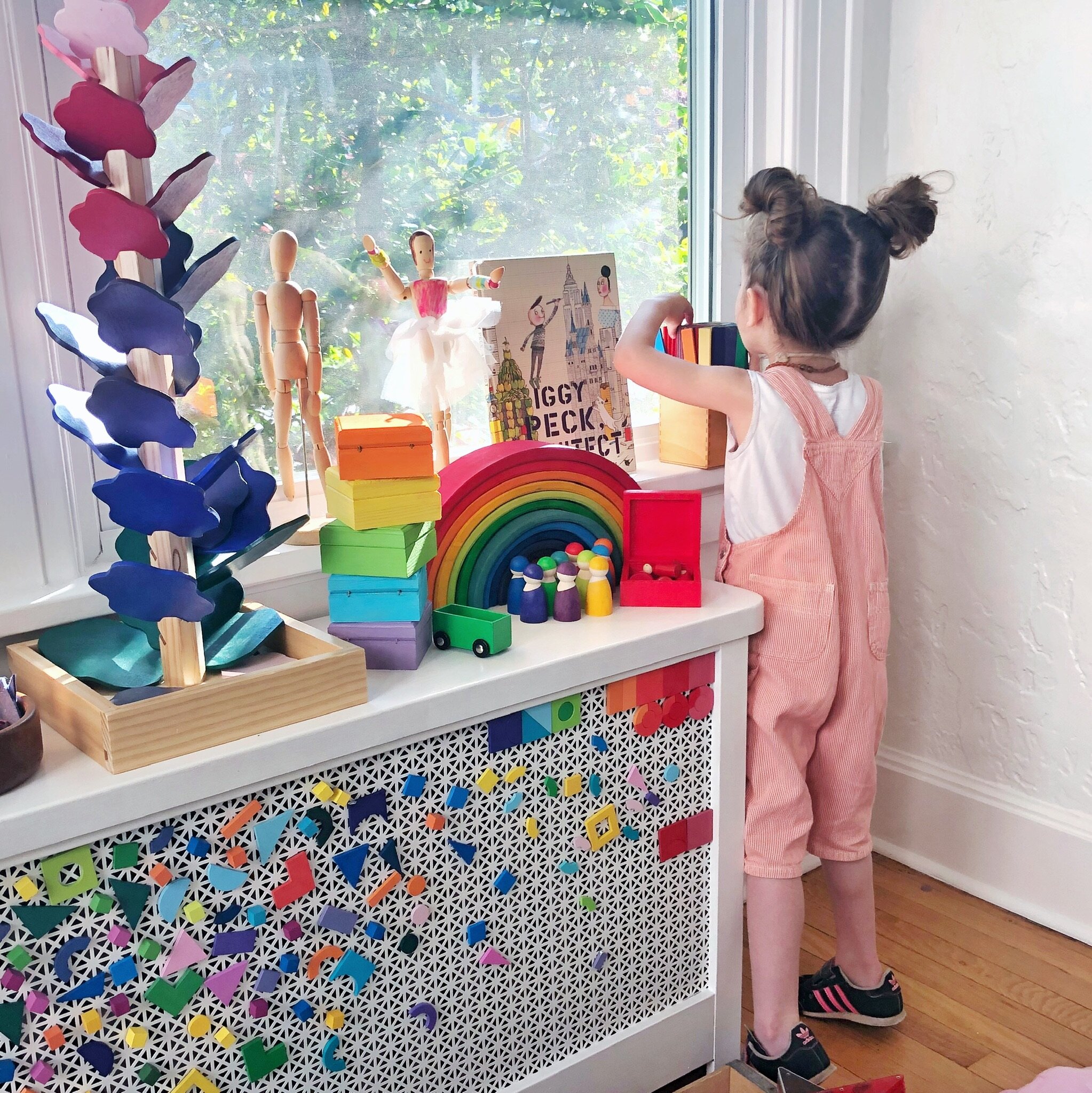3 Essential Tips to Get Kids Playing: Insight from a Mom and Play Expert
/You know how important play is for your child, but sometimes play can feel overwhelming. Here are three simple tips that can transform your child’s play—making it more engaging and less stressful for you.
1. Make Toys Visible and Accessible:
I know that design trends say it’s great for organization but as a play expert and a mom of three, I also know that children need to see what’s available to them. A closed bin puts a barrier between your child’s play materials and them. Make play easy by keeping things on open shelves or in clear bins.
2. Create Pockets of Play in High-Traffic Areas:
Kids love being where the action is! Rather than having a secluded playroom, integrate small, inviting play areas throughout your home. Whether it's a cozy reading nook in your bedroom, an art station in your office, or a mini kitchen setup, these spaces encourage independent play while allowing your child to stay close. My personal favorite is keeping a basket of drawing essentials near a low table—kids are always ready to create and now you will be too!
3. Choose Toys Wisely:
Invest in toys that are not only durable but also align with your child’s developmental stage and interests. Rather than buying toys with one singular use, opt for more open-ended materials that your child can use over time.
Some of our favorite items that promote play at home:
Drawing Station: Set up a basket with pencils, crayons, and sturdy drawing paper at a low table. (Bonus tip: tape the paper down so it doesnt shift around while your child is drawing.)
Learning Tower: A learning tower that is safe and brings kids up to counter height is invaluable. Set up some playdough at the counter while you make dinner. We recommend this foldable, easy-to-clean option!
Open Shelving for Toys: Open shelves allow toys to be displayed at eye level to your child, inviting them to play.
Wall Art Station: Consider giant post-it notes adhered to the wall with a basket of stickers and colored pencils nearby.
Still need more convincing?
A study by Lester and Russell (2010) found that children aged 3 to 5 years old engaged in more frequent and diverse play activities when toys and play materials were readily available in their main living spaces, such as the living room or family room, rather than being confined to a separate playroom.







Rescuing them from discomfort also robs them of resilience.